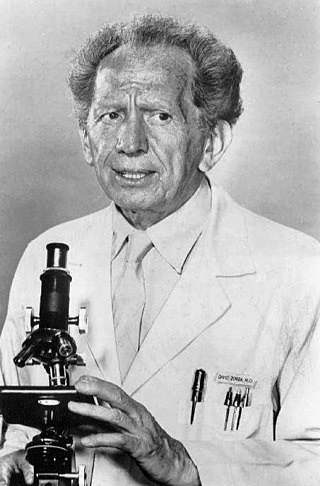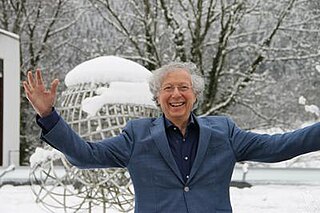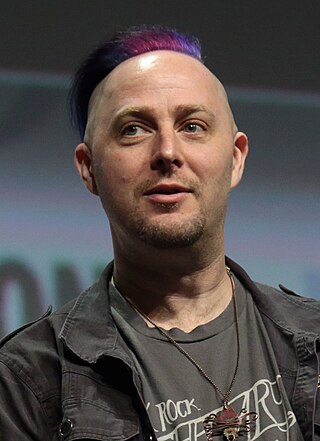Robert Jaffe may refer to:
Robert Jaffe may refer to:
Pope Boniface IV, OSB was the bishop of Rome from 608 to his death. Boniface had served as a deacon under Pope Gregory I, and like his mentor, he ran the Lateran Palace as a monastery. As pope, he encouraged monasticism. With imperial permission, he converted the Pantheon into a church. In 610, he conferred with Bishop Mellitus of London regarding the needs of the English Church. He is venerated as a saint in the Catholic Church with a universal feast day on 8 May.

Sergei Sergeyevich Prokofiev was a Russian composer, pianist, and conductor who later worked in the Soviet Union. As the creator of acknowledged masterpieces across numerous music genres, he is regarded as one of the major composers of the 20th century. His works include such widely heard pieces as the March from The Love for Three Oranges, the suite Lieutenant Kijé, the ballet Romeo and Juliet—from which "Dance of the Knights" is taken—and Peter and the Wolf. Of the established forms and genres in which he worked, he created—excluding juvenilia—seven completed operas, seven symphonies, eight ballets, five piano concertos, two violin concertos, a cello concerto, a symphony-concerto for cello and orchestra, and nine completed piano sonatas.

Robert Toru Kiyosaki is an American businessman and author, known for the Rich Dad Poor Dad series of personal finance books. He is the founder of the Rich Dad Company, a private financial education company that provides personal finance and business education to people through books and videos, and Rich Global LLC, which filed for bankruptcy in 2012.

Shalom "Sam" Jaffe was an American actor, teacher, musician, and engineer. In 1951, he was nominated for the Academy Award for Best Supporting Actor for his performance in The Asphalt Jungle (1950). He also appeared in The Day the Earth Stood Still (1951) and Ben-Hur (1959), and is additionally known for his roles as the titular character in Gunga Din (1939) and as the "High Lama" in Lost Horizon (1937).
I Heart Huckabees is a 2004 independent black comedy film directed and produced by David O. Russell, who cowrote the screenplay with Jeff Baena.
Sergei Prokofiev set to work on his Piano Concerto No. 2 in G minor, Op. 16, in 1912 and completed it the next year. However, that version of the concerto is lost; the score was destroyed in a fire following the Russian Revolution. Prokofiev reconstructed the work in 1923, two years after finishing his Piano Concerto No. 3, and declared it to be "so completely rewritten that it might almost be considered [Piano Concerto] No. 4." Indeed, its orchestration has features that clearly postdate the 1921 concerto. Performing as soloist, Prokofiev premiered this "No. 2" in Paris on 8 May 1924 with Serge Koussevitzky conducting. It is dedicated to the memory of Maximilian Schmidthof, a friend of Prokofiev's at the Saint Petersburg Conservatory, who had committed suicide in April 1913 after having written a farewell letter to Prokofiev.

William Francis Galvin is an American politician who serves as the 27th Massachusetts Secretary of the Commonwealth.

Nero Wolfe is a television series adapted from Rex Stout's series of detective stories that aired for two seasons (2001–2002) on A&E. Set in New York City sometime in the 1940s–1950s, the stylized period drama stars Maury Chaykin as Nero Wolfe and Timothy Hutton as Archie Goodwin. A distinguishing feature of the series is its use of a repertory cast to play non-recurring roles. Nero Wolfe was one of the Top 10 Basic Cable Dramas for 2002.
David Scott Jaffe is an American video game designer best known for directing the Twisted Metal and God of War series. In 2009, he was chosen by IGN as one of the top 100 game creators of all time.
Moe Jaffe was a songwriter and bandleader who composed more than 250 songs. He is best known for six: "Collegiate", "The Gypsy in My Soul", "If I Had My Life to Live Over", "If You Are But a Dream", "Bell Bottom Trousers", and "I'm My Own Grandpa".

Arthur Michael Jaffe is an American mathematical physicist at Harvard University, where in 1985 he succeeded George Mackey as the Landon T. Clay Professor of Mathematics and Theoretical Science.

Taliesin Jaffe is an American voice actor, voice director and screenwriter. He has worked on English-dubbing roles for anime and video games. He is a cast member on Critical Role, a web series in which he plays Dungeons & Dragons with other voice actors. Jaffe has also frequently voiced the Flash in various video games.
Robert Loren Jaffe is an American physicist and the Jane and Otto Morningstar Professor of Physics at the Massachusetts Institute of Technology (MIT). He was formerly director of the MIT Center for Theoretical Physics.
Nat Jaffe was an American swing jazz pianist. He was married to singer Shirley Lloyd.
Cohmad Securities was a US company whose main business was to introduce investors to the Bernard Madoff investment company for which it received commission based on the amount invested. The company, whose name combines “Cohn” and “Madoff,” was founded in 1985 by Bernard Madoff and Maurice Cohn, Madoff’s friend and former neighbor. Its office was located at the same address as Madoff's firm, and it employed between 10 and 20 employees with annual sales between $1M and $5M.

Sarah Allison Jaffe is an American singer-songwriter from Denton, Texas. Known for her distinctively clear vocals, she has worked as a singer-songwriter across many musical genres, including acoustic-folk, indie pop and hip hop.
Shirley Jaffe may refer to:
Sidney Leonard Jaffe was an American-born Canadian businessman who was kidnapped from outside his Toronto home in 1981 by American bounty hunters Timm Johnsen and Daniel Kear and transported to Florida after failing to appear for a trial there on charges of land sales fraud. His conviction on the fraud charges was overturned on appeal; his conviction on an additional charge of failure to appear for trial was upheld, but he was paroled after two years and returned to Canada. At the request of the Canadian government, Jaffe declined to appear at a new Florida trial on further land fraud charges in 1985. Johnsen and Kear were extradited to Canada and convicted of kidnapping in 1986, but were set free pending appeal, and their sentences were reduced to time served in 1989, after which they returned to the United States. The Jaffe incident caused significant tensions in Canada–United States relations, and resulted in a 1988 exchange of letters between the two countries on cross-border kidnappings.

One Mississippi is an American comedy television series created by comedian Tig Notaro and Diablo Cody. The pilot episode, directed by Nicole Holofcener, aired on Amazon Prime Video on November 5, 2015, and was picked up for a full series after positive feedback from audiences. One Mississippi premiered on September 9, 2016. On November 14, 2016, Amazon renewed the show for a second season, which was released on Amazon on September 8, 2017. On January 18, 2018, the series was canceled after two seasons which Amazon explained as "part of a move towards bigger, wider-audience series". Eventually as the show is produced by FXP, A division of FX Networks and Disney Television Studios, Disney pulled One Mississippi from Amazon Prime Video, although it has since returned. Currently One Mississippi streams on Disney+ Star internationally and on Hulu in the U.S. as well.
Jaffe and its variant spellings Jaffé and Yaffe are Hebrew-language surnames.